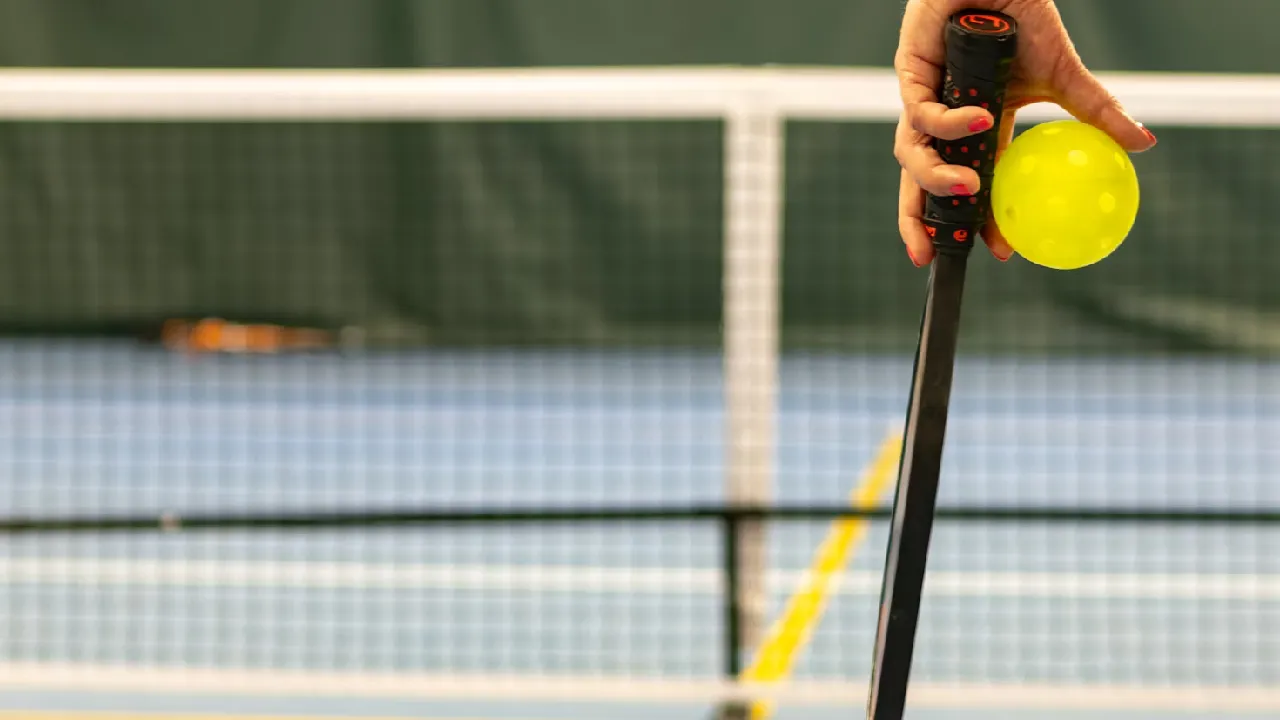Pickleball Court Rules: Your Guide for League Play
Pickleball court rules and social nature make it perfect for players of all ages and skill levels. Yet when it comes to organized competition, whether you’re joining a couples pickleball league or an adult pickleball league, understanding the official court rules is essential. In this guide, we’ll cover everything from pickleball court dimensions and layout to serving protocols, scoring, faults, and etiquette, so you can step on the court with confidence.
1. Court Dimensions and Boundaries
An official pickleball court measures 20 feet wide and 44 feet long, identical to a doubles badminton court. The net sits at 36 inches at the sidelines and 34 inches in the center. Key zones include:
Non-Volley Zone (Kitchen): A 7-foot area on both sides of the net that prohibits volleying (hitting the ball in the air).
Service Courts: Each side is divided into right and left service courts by a centerline extending 15 feet from the net.
Boundary Lines: The perimeter lines define the in-bounds area; any ball touching these lines is considered in.
Whether you’re marking a backyard court or preparing for league play, adherence to these dimensions ensures fair competition. Proper pickleball league court layout allows consistent play across all venues.
2. Pickleball League Court Layout
In late-season tournaments or local clubs, courts may be arranged in rows or clusters to maximize space. When setting up a pickleball league court layout, consider:
Court Spacing: Leave at least 10 feet between adjacent courts to avoid interference.
Walkways: Provide 3–5 feet behind baselines for safe movement.
Spectator Areas: Designate sidelines for observers without encroaching on play.
Signage: Clearly mark court numbers, scoreboards, and rest areas.
A well-planned layout reduces scheduling conflicts and enhances the experience in a coed pickleball leagues near me scenario, where multiple teams share a facility.
3. Serving Rules and Protocols
The serve is the only shot that starts in the kitchen-free zone. Key serving rules include:
Underhand Serve: Paddle must contact the ball below the waist.
Diagonal Trajectory: Serve must land in the opponent’s diagonal service court, clear of the kitchen.
One Serve Attempt: Each player gets one serve attempt per point; a fault grants the serve to the partner in doubles.
In an adult pickleball league, these serving protocols maintain consistency. Any serve hitting the net but landing in the correct area is called a “let serve” and replayed.
4. Scoring and Match Formats
Most leagues use the traditional rally scoring to 11 points, win by two. Variations include:
11-Point Games: First to 11, two-point margin.
15-Point Matches: Often used in tournament brackets.
21-Point Pro Sets: Common for club championships.
In couples pickleball league play, partners alternate serving turns and positions. Accurate scorekeeping and rotation ensure fairness, especially in mixed doubles or coed pickleball leagues near me.
5. Faults and Common Infractions
Understanding faults prevents unintended point losses. Common infractions include:
Volleying in the Kitchen: Stepping into the kitchen and volleying is a fault.
Foot Faults: Server stepping on or over the baseline.
Double Hits: Ball contacting the paddle twice in one swing.
Ball Out of Bounds: Landing beyond boundary lines.
Officials in an adult pickleball league watch for these to keep matches moving and competitive.
6. Doubles Positioning and Rotation
In doubles, partners must stay on their side until a serve is made. Key points:
Right-Left Rotation: After scoring, partners rotate sides.
Serving Sequence: Server 1 serves until a fault, then partner serves.
Side Switching: Teams switch sides of the court at the end of each game to counter sun or wind.
These rotations are critical in pickleball league court layout planning and help avoid confusion during couples pickleball league and adult pickleball league matches.
7. Etiquette and Sportsmanship
Good etiquette fosters a positive atmosphere:
Respect Opponents: Avoid distracting movements or trash talk.
Quick Court Changes: Vacate courts promptly after matches to keep schedules.
Line Calls: Make honest calls; if in doubt, call the ball in.
Handshake or Fist Bump: Acknowledge opponents and partners at match end.
Such practices are especially valued in coed pickleball leagues near me, where community spirit is paramount.
8. Equipment Standards and Maintenance
Approved equipment ensures uniform play:
Balls: Must meet USAPA specifications (40 mm, 26–34 holes).
Nets: Height and tension must be regulation standard.
Paddles: Approved paddles only; no reflective or protruding elements.
Regular court maintenance—cleaning surfaces and checking net tension—keeps an adult pickleball league running smoothly.
9. Leagues and Resources
Looking for leagues? Consider:
Couples Pickleball League: Social format, usually mixed doubles.
Adult Pickleball League: Competitive brackets for all skill levels.
Coed Pickleball Leagues Near Me: Community centers often list local options.
Websites like USAPA.org and local recreation departments can help you find the perfect match.
10. Tips for New League Players
Learn the Rules: Review the official USAPA rulebook.
Practice Serving: Consistent serves win matches.
Know the Layout: Visit venues in advance to get familiar with the court setup.
Wear Proper Footwear: Non-marking court shoes with good lateral support.
Communicate with Partners: Establish signals and calling systems.
These strategies will set you up for success in any adult pickleball league or couples pickleball league.
Pickleball court rules form the backbone of fair, competitive play. By mastering court dimensions, serving protocols, scoring, and etiquette, you’ll be ready to dominate in any format like couples pickleball league, an adult pickleball league, or coed pickleball leagues. Follow the rules and enjoy the camaraderie that makes pickleball so special!
COMMENTS
Sort by :





Leave A Comment